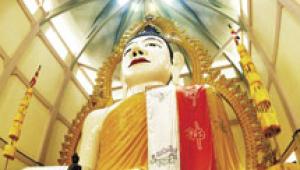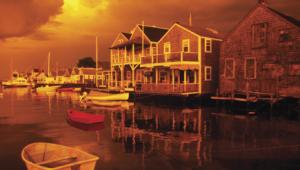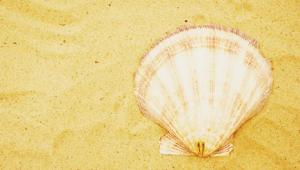Passport
Capturing That Special Sense Of Place
|
It's the seeing that's the magic, not the technique, the execution, or the equipment. The magic that makes the difference between an okay photograph and a great one is seeing the scene or the element in the scene, capturing it and moving on to the next scene. This is especially true of photographs that an editor I work with from time to time called "field still life photographs"-those accent shots that imply a particular place, set a mood, or add to the coverage. Frankly, I take these photographs because I'm in the business of selling pictures-and they sell. I learned long ago that not every travel photograph has to be-or should be-an image of a monument or a landmark. I always look for the close-up, detail or still life that immediately identifies the location or gives the viewer a sense of the place. Sometimes I'll take these photographs because they are the only ones I can get at a particular moment due to bad weather or crowds of tourists. That's when I turn my attention to the small canvas. I know from 20 years of shooting experience that in each location there are always still life pictures that will also hold commercial value. For example, my photograph of incense, taken in Hong Kong, immediately gives the viewer a sense of place. You may not know it's Hong Kong, but you know you're in Asia and that makes it a commercially viable picture. As a stock shot it can be used precisely because of its identification of a place. If you look at how commercial photography is used in print-and stock photography is overwhelmingly print photography-you'll see that the incense photograph is both a scene setter and an accent. Now I know you're probably not a stock photographer, so what's the value of these accent photos to you? Think variety, interest, and challenge. Variety because most travelers take the main shots, so the accent photograph stands out in any portfolio or album. Interest because here's something to talk about with people who see your photographs. And challenge because€well, the magic's in the seeing, so challenge yourself to see. The overall shot's important, but remember that there are other elements to the story of a location that can be just as interesting, challenging, and artistically powerful. Think about television and film for a moment, and how writers and directors tell their visual stories. Every show, every movie has a set decorator or designer and an Art Director. The elements they add-flowers, books, furniture, paintings-establish who the people are and how they live. These elements add a sense of their humanity. Accent photos that you take on your travels do the same thing. When I first started photographing, Art Directors would point out these accent subjects. Pretty soon I was spotting them on my own, and now I've refined it to the point where every destination has me thinking about the accents. The "iconic" shots of the place-the monuments and the landmarks are not hard to identify. They're on the post cards and in the guidebooks. Now, when I get to a place the first thing I'm looking for are the accents. And the longer I spend in a place, the more of them I see. To be honest, though, I don't spot many of these field still life photos as complete images. Early on I photographed only what I saw, but now I create most of them. I might see one element and then add another, or two. I might see something that's almost there, and finish it off with just the right color accent. So I create rather than capture. I put pieces together in the exact environment that fits. In fact, except for the wind kites, I set up all the images you see accompanying this article. You won't need much in the way of special equipment to get this type of photograph. Most of the time it comes down to a sturdy tripod and a way to get close. A macro, micro, or tele lens will do it. I often use a fully extended 80-200mm zoom or a 300mm tele from way back-that's a favorite technique-and my 55mm micro lens. I also use fill flash and small reflector cards. The closer I get to a subject, the more light I need-and the more control of light. If you look at most of my still life location images, you'll probably think that I didn't use anything other than natural light. Well, if I'm doing it right, that's what you should think. But a lot of time I use my Nikon SB24 Speedlight on my Nikon F4 at -2 or even -3 EV exposure compensation for just a touch of fill. And I always carry 3" square, aluminum foil-covered pieces of cardboard to act as reflectors so I can direct light-either from flash or sunlight-onto the scene where it's needed. Finding and arranging accent photos on your travels won't be difficult, but I'd suggest practicing the flash and reflector techniques close to home so you'll have the experience when travel time comes.
|
















































